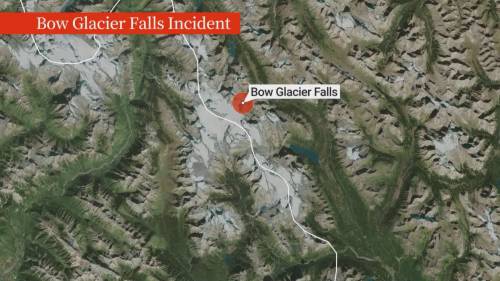Article – The call crackled through emergency channels just after 6 p.m. on a clear summer evening—a massive section of Mount Edith had broken free, thundering down onto Highway 1A in Banff National Park. What began as a peaceful Friday quickly transformed into tragedy when tons of rock came crashing onto the roadway near Johnston Canyon, claiming one life and injuring three others.
I spent yesterday afternoon speaking with witnesses who described the moment of impact as “sounding like thunder, but it didn’t stop.” Sarah Macintosh, a Calgary resident who was hiking nearby, told me she felt the ground shake beneath her feet. “At first, I thought it was an earthquake. Then we heard the screams.”
Parks Canada officials confirmed that a 26-year-old woman from Edmonton died at the scene when the rockslide struck her vehicle. Three other individuals suffered injuries ranging from minor to serious, with one airlifted to Calgary’s Foothills Medical Centre in critical condition.
“This is one of the most significant rockfall events we’ve seen in the Bow Valley corridor in recent years,” explained Dr. Michael Bovis, a geomorphologist with the University of Alberta who studies mountain slope stability. “The combination of recent rainfall followed by rapid temperature fluctuations likely contributed to this failure.”
The section of Highway 1A between Johnston Canyon and Castle Junction remains closed indefinitely as geotechnical engineers assess the stability of the remaining rock face. Parks Canada has established a detour using the Trans-Canada Highway, though visitors should expect delays of 30-45 minutes during peak periods.
This incident raises troubling questions about rockfall risk in Canada’s mountain parks. According to the Canadian Geological Survey, climate change is accelerating the freeze-thaw cycles that contribute to slope instability throughout the Rocky Mountains. Their 2023 report documented a 27% increase in significant rockfall events across Western Canada compared to the previous decade.
“What we’re seeing isn’t random,” says Jennifer Marsh, senior climatologist with Environment Canada. “As permafrost thaws and precipitation patterns shift, mountain slopes are responding. Infrastructure built decades ago may not account for these changing risk profiles.”
For the communities that depend on tourism, there’s a delicate balance between safety and access. Banff Mayor Karen Sorensen expressed her condolences to the victims while acknowledging the broader implications.
“Our hearts break for those affected by this tragedy,” Sorensen said during an impromptu press conference yesterday evening. “While Banff National Park has comprehensive safety protocols, this incident reminds us of nature’s unpredictable power. We must evaluate if our current measures are sufficient for changing conditions.”
The deceased woman’s name hasn’t been released pending notification of family members. Sources within Parks Canada tell me she was traveling with her partner when their vehicle was struck by the largest section of the rockslide. First responders described a scene of devastation spanning nearly 200 meters of roadway.
“I’ve worked in Banff for twelve years, and I’ve never seen anything like it,” said paramedic James Collins, who was among the first emergency personnel to arrive. “The scale was overwhelming. Some boulders were larger than the vehicles they crushed.”
This incident comes just three years after a similar rockslide on Highway 93 near Jasper injured two motorcyclists and prompted a comprehensive review of rockfall mitigation strategies throughout the mountain park system. That review recommended additional protective measures for high-risk corridors, though implementation has been gradual due to budget constraints.
Alberta Transportation Minister Devin Dreeshen announced this morning that his department will work with Parks Canada on an accelerated assessment of rockfall protection along all mountain highways. “Visitor safety must be our paramount concern,” Dreeshen stated. “We need to determine if climate adaptation requires more aggressive infrastructure investments.”
Geological experts caution that completely eliminating rockfall risk is impossible in mountain environments. Dr. Bovis explained that the Canadian Rockies are relatively young mountains geologically speaking, making them naturally prone to erosion and rockfall.
“What we can do is improve detection, prediction, and protection,” he noted. “Technologies like lidar monitoring can detect subtle shifts before catastrophic failures, and reinforced canopies can shield roadways in high-risk zones.”
For now, park visitors are being urged to remain vigilant, especially during and immediately after rainfall. Parks Canada has temporarily closed several hiking trails near Mount Edith and issued advisories for others.
Local business owners worry about the economic impact during peak tourist season. Linda Watkins, who operates a gift shop in Banff, expressed concern but perspective: “We depend on summer visitors, but no amount of tourism dollars is worth a human life. If we need to make changes to keep people safe, that’s what matters.”
As cleanup operations continue, this tragedy serves as a sobering reminder of the raw power that shapes our mountain landscapes—a force that demands our respect, preparation, and perhaps, in an era of changing climate, a new approach to how we manage risk in these treasured natural spaces.






